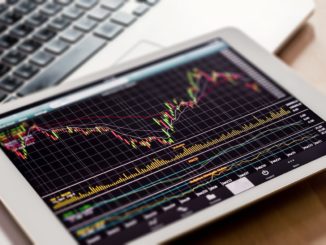
As a bonus for my real-time subscribers, I periodically answer user questions that come up in comment threads and messages in a little more depth. These won’t be article-length responses, but think of it more as a lightning round for whatever’s on your mind!
Today's question (lightly edited for clarity)...
Question: I'm long MTUM & QUAL and happy with the results. Vanguard just rolled out new ETFs and I opened starter positions in VFMF, VFQY, VFMO, VFVA & VFMV. Have you looked at any of these?
Answer: Indeed I have!
The tickers in question are related to Vanguard's new lineup of actively managed factor ETFs. They include the Vanguard U.S. Minimum Volatility ETF (VFMV), the Vanguard U.S. Value Factor ETF (VFVA), the Vanguard U.S. Momentum Factor ETF (VFMO), the Vanguard U.S. Liquidity Factor ETF (VFLQ), the Vanguard U.S. Quality Factor ETF (VFQY) and the Vanguard U.S. Multifactor ETF (VFMF). Subscribers to ETF Focus got my rundown of these new funds right around the time they debuted back in February, but now's a good time to revisit them.
 The Vanguard factor ETFs have a few things going for them that I really like...
The Vanguard factor ETFs have a few things going for them that I really like...
- They're cheap - In true Vanguard fashion, these factor ETFs are still incredibly inexpensive despite the fact that they're actively managed. The Multifactor ETF carries an expense ratio of 0.18%, while the single factor funds charge 0.13%. By comparison, one of the biggest single factor funds out in the marketplace, the PowerShares S&P 500 Low Volatility ETF (SPLV), charges 0.25%.
- They're actively managed - This is important because market sentiment can change quickly. One of my chief complaints about a fund, such as the iShares Edge MSCI USA Momentum Factor ETF (MTUM) is that it only rebalances itself twice a year. If the market changes quickly like it did during the correction in February, these funds are going to be stuck with what they have until the next recomposition. An actively managed factor ETF can react rapidly to changes in the markets.
- They're quantitatively managed - A quant fund takes the human element out of the equation. Humans are susceptible to biases and emotions, but the Vanguard factor ETFs are managed by computers. Since they're running algorithms to pick stocks, they can more objectively view balance sheet data and market trends to help pick winners. And computers cost less than humans.
- They've got the Vanguard name - When Vanguard launches a new product, the market notices. If a generic small shop were to launch a factor ETF, it would be fighting an uphill battle just to get attention. Vanguard is a brand leader, which helps instantly attract investor interest.
Those four factors should spell success for these funds, but here's the strange thing. It hasn't. In fact, it really hasn't even come close. These ETFs have been around for about three months. Look at where they stand as far as assets under management are concerned.
Click the button below to read the rest of this original article on Seeking Alpha.
If you enjoyed reading this article, be sure to subscribe to the site and receive the ETF Focus Weekly newsletter absolutely FREE! Just check out the box below!


